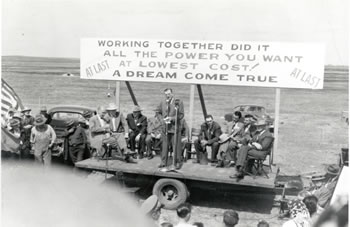Wake Electric Cooperative is an electric distribution cooperative owned and controlled by thousands of people just like you—the consumer-members. Your co-op is a not-for-profit electric utility with a customer service center in downtown Wake Forest, Wake County at 100 S. Franklin Street.
Engineering and Operations are located at 228 Park Avenue, Youngsville. Wake Electric provides electric service to approximately 56,000 members in Durham, Franklin, Granville, Johnston, Nash, Vance, and Wake counties.
Wake Electric is governed by a nine-member Board of Directors representing geographic districts throughout the service area. Directors are elected at-large for rotating three-year terms at the cooperative’s annual meeting.
While some of the service area remains rural, much has become suburban as the Raleigh-Durham and Research Triangle Park metropolitan areas have expanded.








